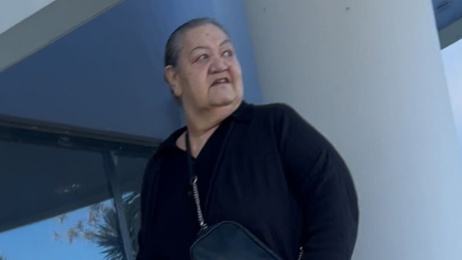

Warning: This story discusses self-harm and suicide.
A young woman was suffering from anxiety and depression when she died by suicide during a stay at a mental health facility.
But, according to a new report released today she wasn’t properly assessed when she asked staff to be transferred to a more secure facility shortly before her death.
The woman, who was in her 20s, had been struggling with post-traumatic stress disorder, alcohol use disorder, and an eating disorder when she was in the care of a community-run mental health respite facility, contracted to what was then the Counties Manukau District Health Board (CMDHB).
Deputy Health and Disability Commissioner Vannessa Caldwell today released her findings on the 2016 death, which occurred before CMDHB was merged into Te Whatu Ora.
In the midst of serious mental health troubles, the woman presented to her GP.
She met with a psychiatrist and nurse, and a plan was made for her to stay with family until a bed became available at the community mental health service (CMHS). Five days after seeing her GP she was admitted to the respite facility for what was planned to be a seven-day stay.
The facility provided a home-like environment for patients. It was staffed by “peer support specialists” who had personal experience of mental ill-health, while a nurse was on site daily. The then-DHB maintained responsibility for the clinical treatment of all patients, who typically stayed for around seven days.
The day after arriving, the woman was assessed by a psychiatrist and other clinical staff. She said while she had “relentless thoughts” of harming herself, she had no plans. The psychiatrist recorded her judgment was impaired and a daily review of her mental state was required.
Records from the meeting show her risk level was changed to high, and that she required hourly well-being checks due to concerns over her safety.
Six days after arriving at the facility, a psychiatrist recorded she presented as bright, alert and attentive. She had been sleeping well, but did not feel ready to begin trial periods at home. The psychiatrist concluded her state had improved. Well-being checks were reduced from hourly to two-hourly.
But two days later, despite earlier being in a good mood, a support worker documented in the woman’s clinical notes that the patient was concerned for her own safety and wanted to be moved into a more secure facility.
A psychiatrist spoke with her and told her the facility she was in was the best place for her. Welfare checks were increased to hourly.
At another check the same day, the woman again expressed her desire to be in a more secure facility. Clinical notes recorded the reason the secure facility wasn’t ideal was because there was ongoing construction there, but the CMDHB told the HDC that the decision was based on clinical need, not the ongoing construction.
Nine days after arriving at the facility, a plan was made for discharge the following week. She was to stay with her parents, but had told staff she would not feel supported at their place.
Two days later, she told staff she would stay with her parents after being assured they would support her. Notes from a meeting show she had told staff that she still had suicidal thoughts, and there were “opportunities at her parent’s place to [attempt suicide]”.
That night the patient left the facility to see a friend. She returned shortly before midnight, telling staff she drank two cans of beer and wanted her medication. She fell asleep at 4.30 am.
At 1pm, a group of clinical staff reviewed her, with the patient telling staff she desperately wanted to “feel normal”. Her notes showed she was “very subdued” in the meeting.
From 1.30pm until around 5.30pm, there was no record that hourly checks were performed. The CMHS told the HDC that a staff member said another patient had intensive support needs and two checks couldn’t be completed.
At 5.30pm, staff checked on the woman in bed, where she declined dinner or any activities. Just 20 minutes later she was found unresponsive on the floor. She was declared dead that day.
DHB responsible for service delivery failure
Caldwell found that there wasn’t adequate monitoring of the patient’s alcohol withdrawal. An assessment of the patient’s risk when it came to alcohol was not updated on admission, leaving CMHS staff without the full picture.
When it came to the woman’s request to be moved to a more secure facility, expert advice to Caldwell considered that the decision to keep the patient in the same facility met the accepted standard of care.
But, despite having a planned review shortly prior, there should have been a further assessment when she asked to be moved to a more secure facility. Instead, this was undertaken by a nurse unknown to the patient. The psychiatrist was not consulted about the patient’s concerns.
These failings on the part of the CMDHB amounted to a service delivery failure and a breach of the code of patient rights.
When it came to the CMHS, Caldwell was concerned that some well-being checks were missed on the day of the patient’s death. “The CMHS’s policies and guidance on well-being checks should be robust and clear, to ensure that such checks are carried out adequately and consistently,” she wrote.
Since the issue, the DHB told the HDC that the risk assessment and management policy was revised to consider issues of safety, and new forms were developed. The CMHS has since implemented a minimum of hourly well-being checks across its services, undertaken further staff training and updated devices to support efficient documentation.
Caldwell recommended Te Whatu Ora provide the woman’s family with a written apology, conduct an audit to assess whether each CMHS resident has a single care plan, and provide training to some staff.
The CMHS was also recommended to provide a written apology, consider developing policy and procedures relating to patients with drug or alcohol misuse, and provide staff with training on personality disorder.
SUICIDE AND DEPRESSION
Where to get help:
• Lifeline: 0800 543 354 (available 24/7)
• Suicide Crisis Helpline: 0508 828 865 (0508 TAUTOKO (available 24/7)
• Youth services: (06) 3555 906
• Youthline: 0800 376 633
• What's Up: 0800 942 8787 (11am to11pm)
• Depression helpline: 0800 111 757 (available 24/7)
• Rainbow Youth: (09) 376 4155
• Helpline: 1737
If it is an emergency and you feel like you or someone else is at risk, call 111.
Ethan Griffiths covers crime and justice stories nationwide for Open Justice. He joined NZME in 2020, previously working as a regional reporter in Whanganui and South Taranaki.

Take your Radio, Podcasts and Music with you









